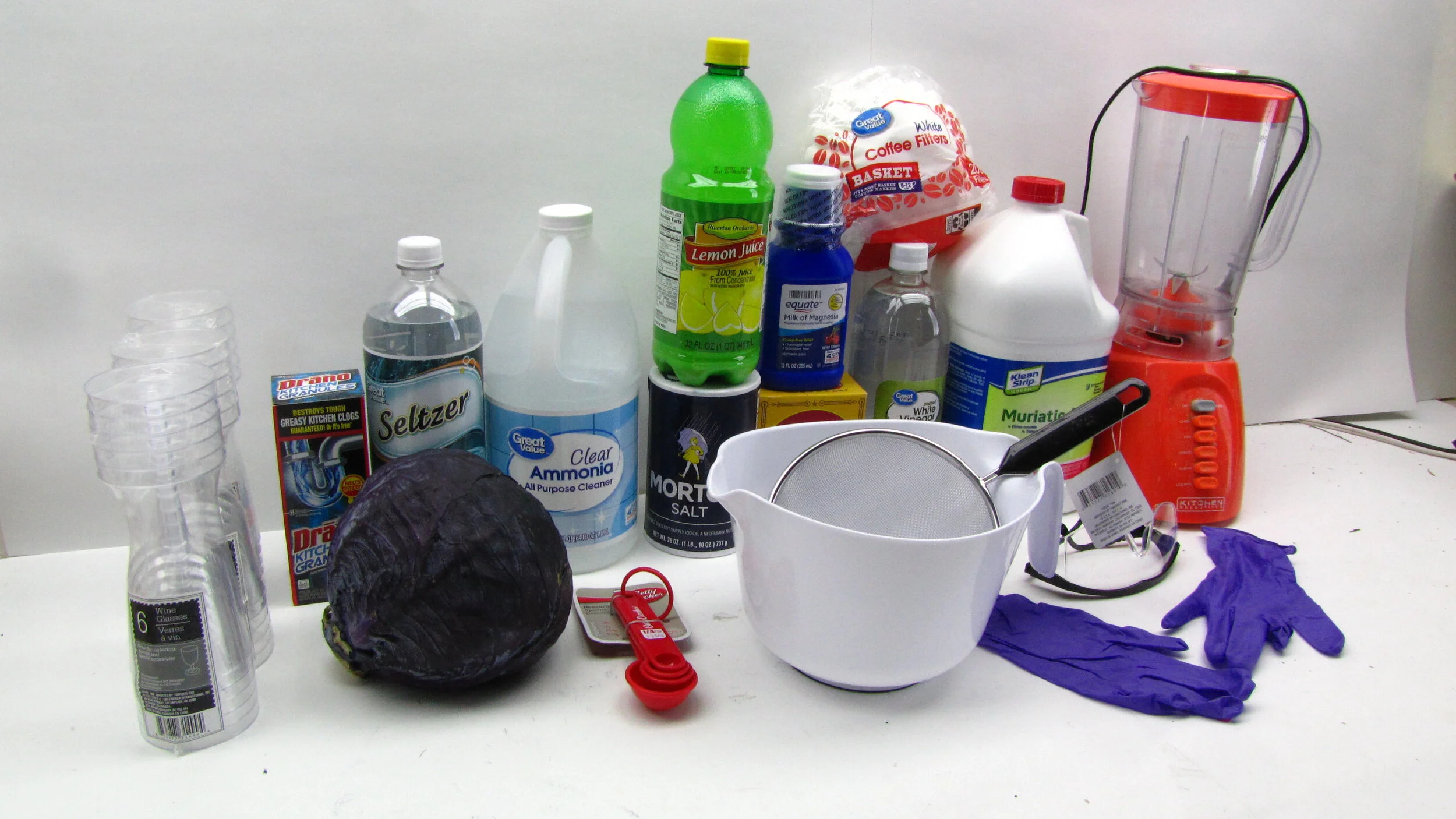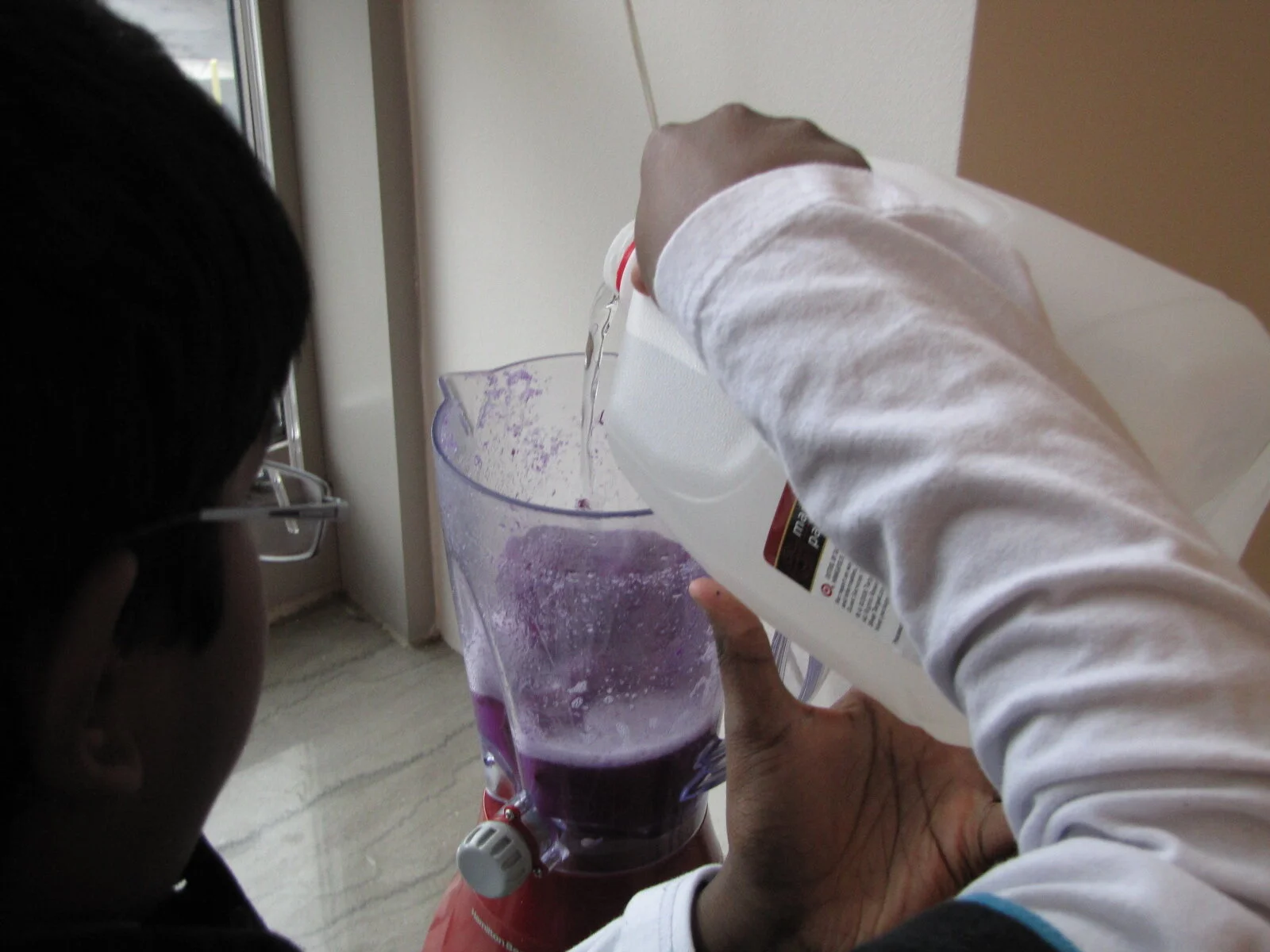Seltzer is a common name for carbonic acid, and carbonic acid is made when carbon dioxide is dissolved in water. The chemical reaction to make carbonic acid is printed below the violet cup with pH 3.5. Carbon dioxide plus water makes carbonic acid that in turns separates into hydrogen cations and a bicarbonate anions. Excess hydrogen cation make the solution acidic and turned the cabbage juice violet. Carbonic acid is consider harmless, in fact it is used to make the carbonated beverages sold for consumption. This organic acid is common and harmless.













